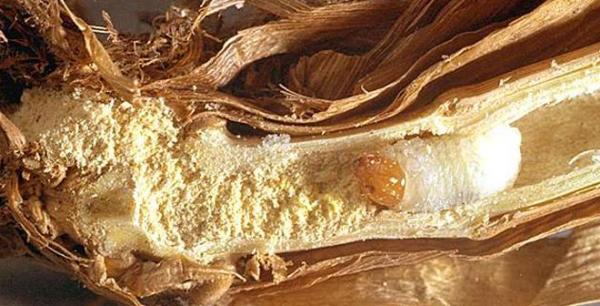Just name the turf variety, and Mother Nature has a species of billbug to terrorize it.
 According to a study published in the Journal of Integrated Pest Management, at least 10 billbug species have most of the country's turfgrass covered, meaning that professional turf managers from Maine to Mexico struggle to control these pests.
According to a study published in the Journal of Integrated Pest Management, at least 10 billbug species have most of the country's turfgrass covered, meaning that professional turf managers from Maine to Mexico struggle to control these pests.Control methods range from biological control such as parasitic nematodes and beneficial bacteria to establishing pest-resistant turf varieties to a chemical knockout with a pyrethroid.
Research on the subject was conducted by Utah State doctoral student Madeleine Dupuy under the guidance of assistant professor and entomologist Ricardo Ramirez, Ph.D.
"There are other methods of cultural control and biological control that I think deserve a closer look," Dupuy wrote.
"If you have a problem with billbugs in one part of the golf course every year, you might consider overseeding that area with a resistant variety of turfgrass, such as a resistant Kentucky bluegrass cultivar, or an endophyte-enhanced ryegrass or fescue."
Billbug species typically found throughout the United States include the bluegrass billbug (Kentucky bluegrass, bentgrass, ryegrass, fescue, zoysiagrass), hunting billbug (Kentucky bluegrass, ryegrass, fescue, zoysia, Bermudagrass), Rocky Mountain billbug (Kentucky bluegrass, ryegrass), Phoenix billbug (Bermuda, zoysia, kikuyu), uneven billbug (Kentucky bluegrass, fescue, ryegrass, Bermuda, zoysia), lesser billbug (Kentucky bluegrass, fescue, ryegrass) and southern corn billbug (Bermudagrass). Each differ in their range and other behavioral characteristics, but do share a few things in common.
Typically, adults emerge from their overwintering stage to mate in spring, after which the female will chew holes in the stems of turf plants to deposit her eggs near the crown. The first instar will emerge a week or two later. That first instar will continue feeding on the plant near the crown before the second of five instar stages will drop into the soil where it will begin eating the roots of the turf plant. The combination of a weakened crown and damaged roots combine for a predictable outcome for the turf.
Damage manifests first as patches of discolored tissue and eventually death of the turf plant. Early signs of damage, Dupuy writes, often is mistaken for disease and the latter stages of misdiagnosed as drought stress. Damage, however, is accelerated in turf already under stress from another outside influence such as drought or disease.
The researchers suggest monitoring billbug activity through use of pitfall traps. The hunting billbug is nocturnal, and their activity can be monitored on greens or fairways with a strong spotlight.
Several newer Kentucky bluegrass varieties, all with fine leaf stems and tougher tissue, have exhibited resistance to billbug feeding. Billbug-resistant zoysiagrasses include Diamond, Zorro, Cavalier and Royal. TifEagle Bermudagrass also has proven to be resistant to billbug-induced stress.
Parasitic nematodes such as Steinernema carpocapsae, Steinernema feltiae and Heterorhabditis bacteriophora all have shown to produce mortality rates among billbugs of nearly 80 percent, they have not been widely accepted because of the availability of cheaper and easier-to-use insecticides, Dupuy said.
These insecticides include pyrethroids to control emerging adults in spring and neonicotinoids and anthranilic diamides applied before the eggs hatch kill the larvae before they can begin feeding.

